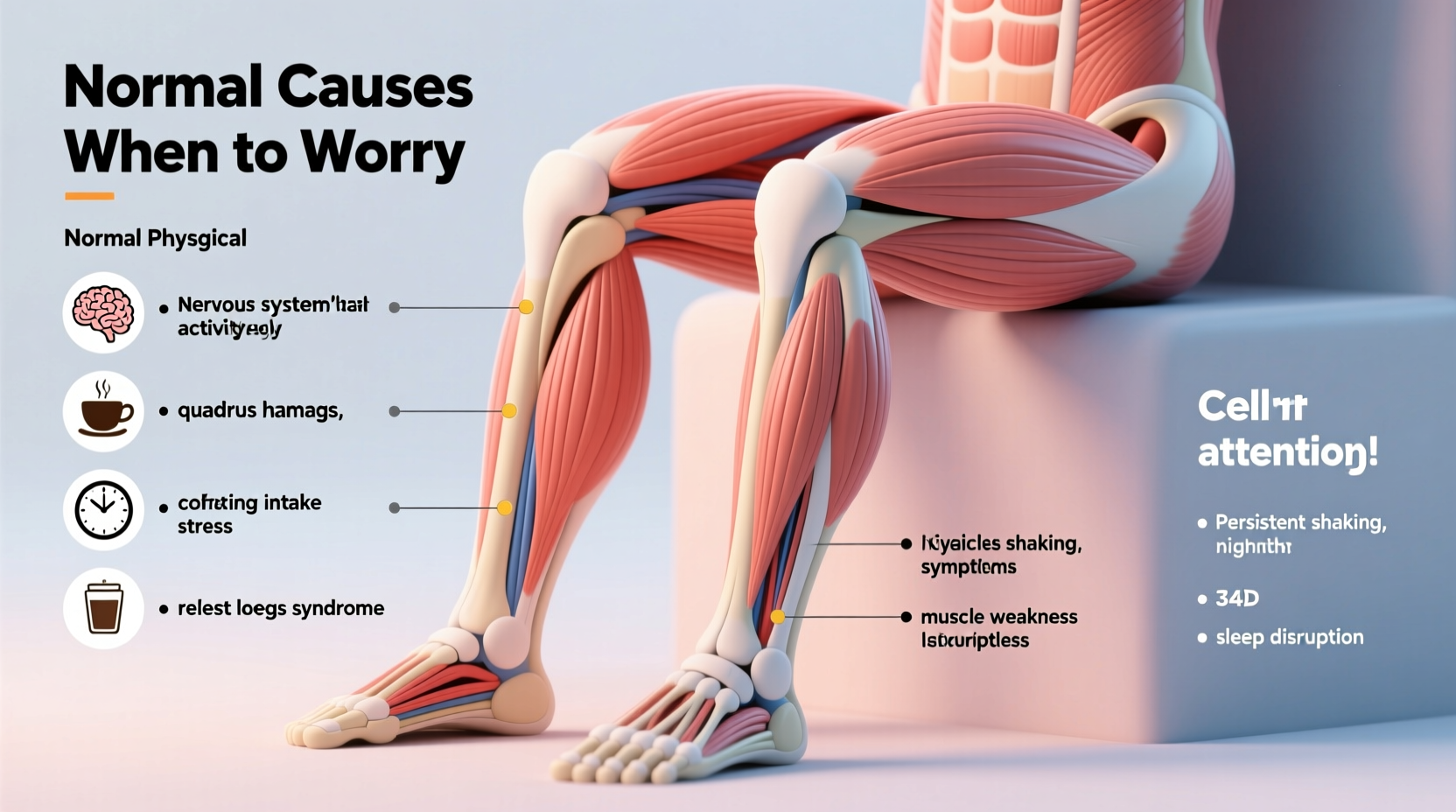Occasional leg shaking while seated is something nearly everyone experiences. Whether it’s a nervous tick during a meeting or an unconscious habit while watching TV, mild tremors or fidgeting are often harmless. However, persistent or intense leg movements can sometimes point to underlying medical conditions. Understanding the difference between normal restlessness and signs that warrant medical attention is essential for maintaining both physical and mental well-being.
Common Causes of Leg Shaking When Sitting

Leg shaking—also known as restless legs or jittery limbs—is typically a response to internal stimuli. The movement may be voluntary or involuntary and can stem from various psychological, neurological, or lifestyle-related factors.
- Anxiety and stress: One of the most frequent triggers. When under pressure, the body activates its “fight-or-flight” response, leading to muscle tension and repetitive motions like leg bouncing.
- Caffeine intake: High consumption of coffee, energy drinks, or other stimulants can overexcite the nervous system, causing tremors or restlessness in the limbs.
- Boredom or concentration: Some people shake their legs subconsciously when focused on a task or disengaged during long periods of sitting.
- Nerve irritation: Compression or irritation of nerves in the lower back (such as sciatica) can cause twitching or trembling sensations in the leg.
- Fatigue: Physical exhaustion may manifest as muscle twitches, especially after prolonged activity or poor sleep.
When Leg Shaking Could Signal a Medical Condition
While occasional shaking is usually benign, consistent or disruptive movements may indicate a neurological or physiological disorder. Recognizing red flags early allows for timely diagnosis and treatment.
Restless Legs Syndrome (RLS)
A chronic condition characterized by an uncontrollable urge to move the legs, often accompanied by uncomfortable sensations like tingling, crawling, or itching. Symptoms typically worsen at rest and improve with movement, particularly in the evening or at night.
Essential Tremor
This neurological disorder causes rhythmic shaking, most commonly in the hands but also in the legs. It tends to run in families and increases with age. Unlike Parkinson’s disease, essential tremor usually occurs during action (like holding a posture), not at rest.
Parkinson’s Disease
Although less common as a cause of isolated leg shaking, Parkinson’s can present with resting tremors—often starting in one limb. Additional symptoms include stiffness, slow movement, and balance issues.
“Persistent leg tremors, especially if asymmetric or worsening over time, should prompt evaluation by a neurologist to rule out movement disorders.” — Dr. Lena Torres, Neurologist, Cleveland Clinic
Do’s and Don’ts: Managing Leg Shaking
| Do’s | Don’ts |
|---|---|
| Stay hydrated and maintain balanced electrolytes | Consume excessive caffeine or alcohol |
| Engage in regular physical activity (e.g., walking, stretching) | Sit for prolonged periods without breaks |
| Practice relaxation techniques (meditation, yoga) | Ignore worsening or spreading tremors |
| Maintain good sleep hygiene | Self-diagnose using online symptom checkers |
| Consult a doctor if symptoms interfere with daily life | Disregard family history of neurological conditions |
Real-Life Example: When Restlessness Was More Than Just Nerves
Mark, a 42-year-old accountant, noticed his right leg began shaking frequently while working at his desk. Initially dismissing it as stress, he observed the tremor persisted even during weekends and started affecting his sleep due to nighttime leg discomfort. Over several months, the shaking became more pronounced and spread slightly to his hand when typing. Concerned, he visited a neurologist who diagnosed him with essential tremor. With medication and lifestyle adjustments—including reduced caffeine and daily stretching exercises—Mark regained control over his symptoms and improved his quality of life.
This case illustrates how seemingly minor habits can mask progressive conditions. Early intervention prevented further impact on Mark’s professional and personal activities.
Step-by-Step Guide: Assessing and Addressing Leg Shaking
- Monitor frequency and triggers: Keep a simple log noting when shaking occurs, duration, and possible causes (e.g., after coffee, during stress).
- Reduce modifiable risk factors: Cut back on stimulants, improve sleep, and incorporate light exercise into your routine.
- Evaluate accompanying symptoms: Look for numbness, pain, fatigue, mood changes, or tremors in other limbs.
- Try self-management strategies: Use a foot exerciser under your desk, stretch regularly, or apply gentle massage to relax muscles.
- Seek medical evaluation if: Shaking becomes constant, interferes with work or sleep, worsens over time, or runs in your family.
FAQ Section
Is leg shaking a sign of ADHD?
Fidgeting, including leg bouncing, is commonly seen in individuals with ADHD as a way to self-regulate attention and arousal levels. While not diagnostic on its own, persistent restlessness combined with focus difficulties, impulsivity, or time management issues may warrant an ADHD screening by a healthcare provider.
Can dehydration cause leg tremors?
Yes. Dehydration affects electrolyte balance—particularly sodium, potassium, and magnesium—which are critical for proper nerve and muscle function. Low levels can trigger muscle cramps, spasms, or tremors, including in the legs. Staying well-hydrated throughout the day helps prevent these imbalances.
Should I worry if my leg shakes only at night?
If the shaking is linked to an uncomfortable sensation and a strong urge to move, it could be Restless Legs Syndrome. If it occurs during sleep and involves kicking or jerking, it might be periodic limb movement disorder (PLMD). Both conditions disrupt sleep quality and should be evaluated by a sleep specialist or neurologist.
Conclusion: Know Your Body, Trust Your Instincts
Leg shaking while sitting is often nothing to fear—it can simply reflect your body’s response to stress, stimulation, or boredom. But when the movement becomes persistent, disruptive, or accompanied by other neurological symptoms, it’s time to look deeper. Awareness is the first step toward better health. By paying attention to patterns, making informed lifestyle choices, and seeking expert advice when needed, you can address concerns before they escalate.









 浙公网安备
33010002000092号
浙公网安备
33010002000092号 浙B2-20120091-4
浙B2-20120091-4
Comments
No comments yet. Why don't you start the discussion?